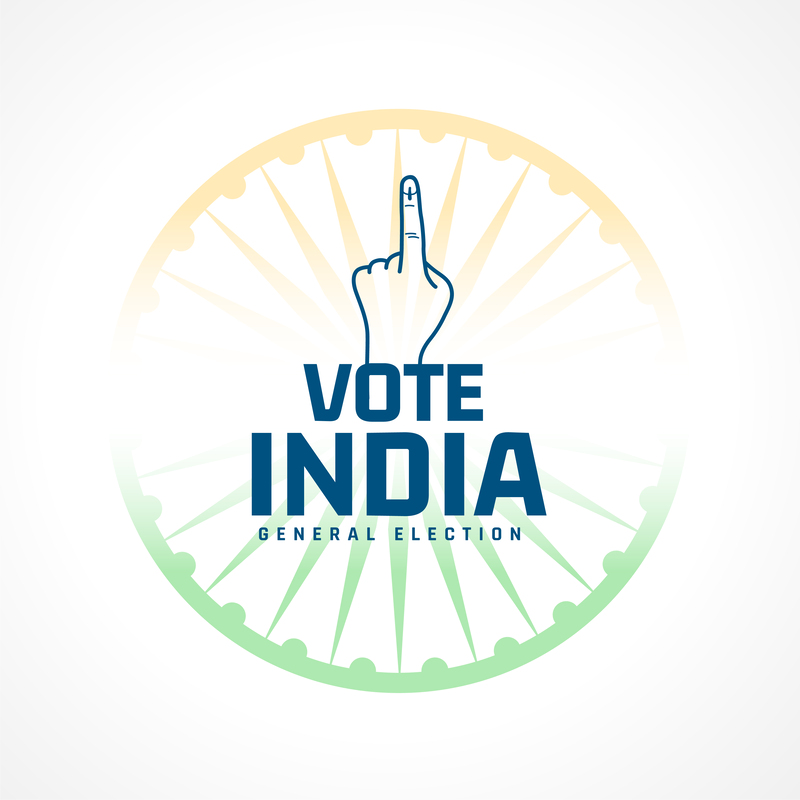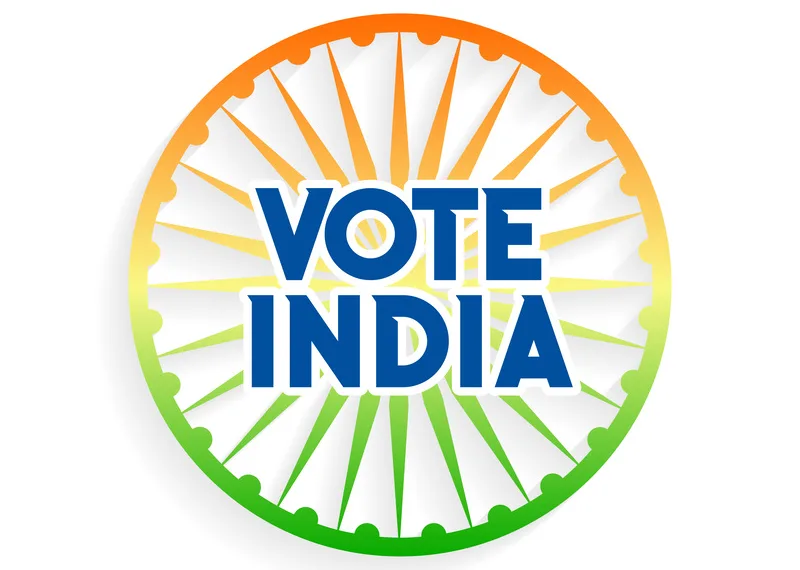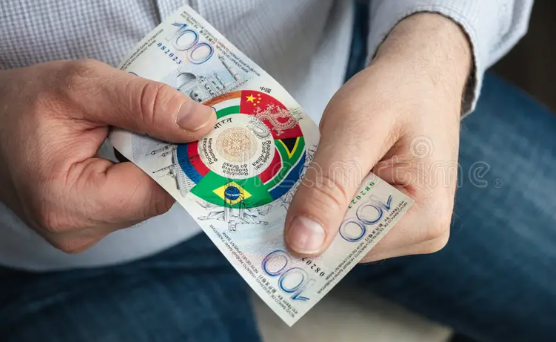
indian general election voters background with ashoka chakra design vector
Introduction of Voting Rights in India
India, the biggest democracy in the world, is proof of the effectiveness of inclusive government and people’s inalienable right to influence the course of their country. Voting rights are fundamental to the democratic ethos because they guarantee all adult citizens the freedom to express their ideas and choose representatives. Voting rights in India have a fascinating history that spans decades, from the time of British colonial authority to the country’s current thriving democracy.
The fight for India’s independence from British colonial control is closely linked to the historical background of voting rights in that country. Voting rights were a luxury that was limited to a small group of people under British rule due to factors including gender, money, education, and property ownership. The great majority of Indians were denied the right to vote by this discriminatory system, which also kept disparities in political representation alive. But the Indian independence movement, spearheaded by political heavyweights like B.R. Ambedkar, Jawaharlal Nehru, and Mahatma Gandhi, ushered in a new age of democratic hopes by opposing colonial tyranny and promoting universal suffrage.
An important turning point in India’s democratic history was the promulgation of the Constitution on January 26, 1950. The Indian Constitution, which is based on justice, equality, and liberty, established the right to vote as a key component of democracy. The Indian Constitution gave all adult citizens the right to vote without distinction based on caste, creed, gender, or religion, a limited franchise during British rule. Millions of Indians were enabled by this revolutionary change to participate in politics actively and exercise their right to vote, laying the groundwork for a more inclusive and participatory democracy.
Being the largest democracy in the world, India is distinguished by its vast electorate. There are now over 97 crore eligible voters in the nation. To put this into perspective, there were 91.20 crore registered voters in India in the most recent Lok Sabha elections in 2019. The Election Commission has been conscientiously enumerating new voters on the voters’ list, including more than two crore young voters in the 18–29 age range. There are a whopping 986.8 million registered voters in the 2019 general elections. The wide and varied electorate in India is a true testament to the country’s democratic character.
In addition, India’s dedication to gender parity in political representation is an admirable model for the world. India accorded women the same voting rights as males from the beginning of its independence, in contrast to many other nations where this privilege was added later. Furthermore, to guarantee political representation and voting rights for marginalized communities like Scheduled Castes (SCs) and Scheduled Tribes (STs), special provisions were added to the Indian Constitution. This shows India’s dedication to redressing historical injustices and advancing social equity in the democratic realm.
Historical Context of Voting Rights in India:
1. Colonial Era:
India was ruled by the British throughout the colonial era, and the British colonial administration established the country’s political system. Only a limited portion of the populace, mostly affluent and privileged people who fulfilled specific property requirements, were allowed to vote. Most Indians, especially women and those from lower socioeconomic backgrounds, were essentially denied the right to vote as a result of these limitations. Limited electoral representation was provided by the Government of India Act of 1919 and the Indian Councils Act of 1909, but the electorate remained exclusive and small.
2. Indian Independence Movement:
The Indian independence movement, led by prominent figures such as Mahatma Gandhi, Jawaharlal Nehru, and B.R. Ambedkar, played a pivotal role in shaping the demand for universal suffrage and democratic rights. The movement advocated for the inclusion of all Indians in the political process and challenged the discriminatory policies of the colonial administration. Through nonviolent resistance, civil disobedience campaigns, and grassroots mobilization, the independence movement galvanized public support for democratic principles and laid the groundwork for India’s transition to self-rule.
3. Adoption of the Constitution:
August 15, 1947, saw the end of British sovereignty in India. The Constituent Assembly of India was entrusted with writing the nation’s Constitution after independence. Adopted on January 26, 1950, the Indian Constitution established the groundwork for a democratic republic and codified the values of fairness, equality, and adult suffrage for everyone. Significantly departing from the limitations of the colonial era, Article 326 of the Indian Constitution guaranteed the right to vote to all adult citizens without distinction based on caste, creed, religion, or gender.
4. First General Elections:
Being the largest democracy in the world, India is distinguished by its vast electorate. There are now over 97 crore eligible voters in the nation. To put this into perspective, there were 91.20 crore registered voters in India in the most recent Lok Sabha elections in 2019. The Election Commission has been conscientiously enumerating new voters on the voters’ list, including more than two crore young voters in the 18–29 age range. There are a whopping 986.8 million registered voters in the 2019 general elections. The wide and varied electorate in India is a true testament to the country’s democratic character.
5. Constitutional Amendments and Reforms:
India has seen several legislative and constitutional changes throughout the years to enhance and extend voting rights. One of the most significant changes was the 1989 reduction of the voting age from 21 to 18, which was intended to increase the involvement of young people in the political process. To further expedite the voting process and boost voter turnout, measures like the installation of Electronic Voting Machines (EVMs) and voter education initiatives have been put into place.
6. Inclusivity and Representation:
Additionally, India has made progress in encouraging representation and inclusion in the election process. To guarantee political participation and voting rights for marginalized populations like Scheduled Castes (SCs) and Scheduled Tribes (STs), special provisions have been included in the Indian Constitution. Affirmative action policies and reserved seats in legislative bodies seek to right past wrongs and provide these populations the capacity to actively engage in the democratic process.
Post-Independence Developments in Voting Rights in India:
India set out to build a strong democratic structure that would guarantee equitable participation and representation for all citizens after gaining independence from British control in 1947. The introduction of universal adult suffrage, a concept established in the Indian Constitution, was essential to this endeavor. All adult citizens are entitled to vote by Article 326 of the Constitution, without distinction based on caste, creed, gender, or religion. This demonstrated India’s dedication to inclusive government and signaled a dramatic break from the limitations of the colonial past. The first general elections in independent India were held in 1951–1952, made possible by the enactment of universal adult suffrage. The largest democratic exercise in history at the time, these elections represented the conclusion of years of struggle for democratic rights and marked a turning point in Indian history. The elections produced the first democratically elected government in independent India, headed by Prime Minister Jawaharlal Nehru, with an electorate of over 170 million people.
With the passage of new laws and constitutional changes, India made great progress in the next decades in extending and enhancing the right to vote. Important changes meant to improve voting process participation and diversity. The 61st Amendment Act of 1989 reduced the voting age from 21 to 18 years old, acknowledging the rights and political maturity of young individuals. In addition, several electoral changes were put into place to improve voting and expedite the electoral process. The adoption of Electronic Voting Machines (EVMs) in the 1990s, which replaced paper ballots and increased voting accuracy and efficiency, was one important innovation. Programs for voter education were also started to increase public knowledge of the election process and promote voting participation.
The Indian Constitution also has special clauses that guarantee marginalized populations like Scheduled Castes (SCs) and Scheduled Tribes (STs) political representation and the ability to vote. Affirmative action policies and reserved seats in legislative bodies seek to right past wrongs and provide these populations the capacity to actively engage in the democratic process. To improve accountability and transparency in elections, programs including online voter registration and the use of Voter Verified Paper Audit Trail (VVPAT) equipment have been implemented. Notwithstanding these advancements, obstacles nonetheless exist to guarantee India’s voters’ complete enjoyment of their rights. Election integrity is still under threat from problems including voter suppression, electoral fraud, and obstacles to voter registration, especially in marginalized areas. In India, addressing these issues is still crucial to preserving the democratic ideals of inclusion and representation.

Key Amendments and Reforms in Voting Rights in India:
1. Lowering of the Voting Age: The reduction of the voting age from 21 to 18 years old was one of the major changes made to India’s voting laws. The 61st Alteration Act of 1988, which recognized young adults’ rights and political maturity, brought about this alteration. India sought to increase young participation in elections and foster more involvement with democratic government by reducing the voting age.
2. Introduction of Electronic Voting Machines (EVMs): Electronic voting machines (EVMs) were introduced, which was a major turning point in India’s electoral history. Electronic voting machines (EVMs) revolutionized the nation’s electoral process by displacing traditional paper ballots. Since their introduction in the 1990s, electronic voting machines (EVMs) have increased voting process efficiency, precision, and transparency while lowering the possibility of electoral fraud and safeguarding the electoral system’s integrity.
3. Voter Education Programs: Voter education programs have been initiated to raise awareness about the importance of voting and the electoral process among citizens. These programs aim to empower voters with information about their rights and responsibilities, electoral procedures, and the significance of participating in democratic governance. Voter education campaigns are conducted through various mediums, including mass media, educational institutions, and community outreach initiatives.
4. Online Voter Registration: India launched online voter registration capabilities to expedite and improve civilian accessibility to the voter registration process. Online voter registration enables qualified voters to register to vote using certain online portals or the Election Commission of India’s (ECI) official website. More people may now easily register to vote and take part in the political process because this initiative simplifies the registration procedure.
5. Use of Voter Verified Paper Audit Trail (VVPAT) Machines: Voter Verified Paper Audit Trail (VVPAT) machines have been used in India in recent years to improve election accountability and transparency. Voters can confirm their vote with VVPAT devices, which offer them a paper trail of their vote before it is electronically recorded. Voters’ trust in the election result is increased by this extra layer of verification, which guarantees the correctness of the voting procedure.
Challenges and Controversies in Voting Rights in India:
1. Voter Suppression: The term “voter suppression” describes actions taken to deny particular voter groups their right to vote or make it more difficult for them to do so. Voter intimidation, electoral register manipulation, and obstacles to voter registration are just a few of the ways that suppression of the voting process can take place in India. Voter suppression measures frequently disproportionately affect marginalized populations, such as religious minorities, tribal communities, and Dalits.
2. Electoral Fraud: A variety of dishonest tactics intended to sway election results, including booth capture, fraudulent voting, and interference with electronic voting machines (EVMs), are collectively referred to as electoral fraud. Voter fraud continues to be reported in certain regions despite the implementation of measures like electronic voting machines (EVMs) and voter-verified paper audit trail (VVPAT) equipment to improve accountability and transparency. This undermines the integrity of the democratic process.
3. Barriers to Voter Registration: Voters who meet the eligibility requirements may be prevented from registering to vote by obstacles such as bureaucratic roadblocks, a lack of knowledge about voter registration processes, and challenges getting the required identity papers. This mostly impacts underprivileged and marginalized populations, who could have trouble obtaining papers or figuring out the registration procedure.
4. Electoral Violence and Intimidation: The integrity of elections in India is threatened by serious issues including electoral violence and intimidation. Election-related violence has been documented, including fights between political parties, assaults on candidates and voters, and disturbances at voting places. Threats and coercion are two other intimidation strategies that can be employed to sway voter behavior and discourage turnout.
5. Money Power in Elections: Money power in elections, including the use of illicit funds, bribery, and electoral spending violations, is a pervasive challenge in Indian elections. Wealthy candidates and political parties often have an unfair advantage in elections, using their financial resources to influence voters, manipulate electoral outcomes, and gain undue advantage over their opponents. This undermines the principle of equal opportunity in elections and raises concerns about the influence of money in politics.
Recent Developments in Voting Rights in India:
1. Online Voter Registration: In recent years, India has introduced online voter registration facilities to simplify the voter registration process and make it more accessible to citizens. Eligible voters can now register themselves as voters through the official website of the Election Commission of India (ECI) or dedicated online portals. This initiative has streamlined the voter registration process, enabling more citizens to enroll as voters and participate in the electoral process conveniently.
2. Voter Verified Paper Audit Trail (VVPAT) Machines: The use of Voter Verified Paper Audit Trail (VVPAT) machines has been introduced to enhance transparency and accountability in elections. VVPAT machines provide a paper trail of the vote cast by a voter, allowing them to verify their vote before it is recorded electronically. This additional layer of verification ensures the accuracy of the voting process and enhances voter confidence in the electoral outcome. VVPAT machines have been gradually deployed in elections across India to improve the integrity of the electoral process.
3. Introduction of NOTA (None of the Above) Option: The Election Commission of India (ECI) introduced the “None of the Above” (NOTA) option in Indian elections, allowing voters to express their dissatisfaction with the available candidates. NOTA was first introduced in the 2013 Assembly elections and subsequent Lok Sabha elections. The introduction of NOTA provides voters with a mechanism to register their protest against unsatisfactory candidates and encourages political parties to field more credible and deserving candidates.
4. Enhanced Voter Education Campaigns: Voter education campaigns have been intensified to raise awareness about the importance of voting and the electoral process among citizens. These campaigns aim to empower voters with information about their rights and responsibilities, electoral procedures, and the significance of participating in democratic governance. Voter education initiatives are conducted through various mediums, including mass media, educational institutions, and community outreach programs, to reach a wider audience and promote voter participation.
5. Use of Social Media for Voter Engagement: The use of social media platforms for voter engagement and outreach has become increasingly prevalent in recent years. Political parties, candidates, and election authorities utilize social media platforms such as Facebook, Twitter, and Instagram to disseminate information about voter registration, polling dates, candidate profiles, and election-related updates. Social media campaigns are designed to engage with voters, particularly youth and first-time voters, and encourage them to participate in the electoral process.
6. Quota Reforms: India now has greater access to international organizations for voting. To increase India’s voting power, for example, the International Monetary Fund (IMF) introduced quota changes.
7. Legal safeguards: The voting age was decreased from 21 to 18 years old by the 61st amendment to the Constitution (1988). Equal voting rights are guaranteed to all eligible residents as it also forbids discrimination based on religion, caste, creed, economic position, and other factors.
8. Supreme Court’s Paradox: The Supreme Court’s Dilemma The Indian Constitution’s basic right to vote has been called into doubt by the Supreme Court. A five-judge panel redesigned the process for choosing the Chief Election Commissioner and election commissioners and considered whether to declare voting rights basic.
Conclusion
In the grand tapestry of India’s democratic journey, the evolution of voting rights stands as a testament to the nation’s unwavering commitment to inclusivity, representation, and the fundamental principles of democracy. From the shackles of colonial oppression to the vibrant democracy it is today, India has traversed a remarkable path, guided by the beacon of universal adult suffrage enshrined in its Constitution. The adoption of universal suffrage in 1950 marked a watershed moment, heralding an era where every adult citizen, regardless of caste, creed, religion, or gender, was granted the sacred right to vote. This pivotal moment symbolized a profound shift in power dynamics, empowering millions of Indians to participate in shaping the destiny of their nation.
Several revolutionary initiatives aiming at enhancing and extending India’s voting rights were implemented throughout the post-independence era. Millions of Indians voted in a historic show of democratic fervor at the first general elections, which took place in 1951–1952, symbolizing the victory of democracy. The idea of young empowerment and political involvement was further supported by significant modifications, such as the 1989 voting age reduction. Voter Verified Paper Audit Trail (VVPAT) devices and Electronic Voting devices (EVMs) also brought about a change in the electoral process, increasing accuracy, transparency, and public confidence in the fairness of elections.
Nonetheless, there have been disagreements and difficulties along India’s path to guaranteeing strong and inclusive voting rights. Significant risks to the integrity of the democratic process still exist from voter suppression, electoral fraud, and obstacles to voter registration. Marginalized groups, including Dalits, tribal communities, and religious minorities, frequently experience the worst effects of these issues since they are unable to fully participate in the political process due to structural obstacles. To preserve the nation’s democratic foundation and the values of inclusion and fair representation, these issues must be resolved.
Recent advancements in the field of voting rights are indicative of India’s continuous efforts to modernize its electoral framework and encourage voter turnout. The use of online voter registration, improved voter education efforts, and social media voter involvement represent India’s capacity to adjust to changing circumstances and technical breakthroughs. India hopes to encourage a culture of civic participation and provide individuals the confidence and conviction to exercise their democratic rights by welcoming these advances.
India is at a turning point in its democratic development and is ready to overcome obstacles and reaffirm its commitment to democratic principles. Important elements in this process include bolstering institutional systems for election monitoring, improving campaign finance transparency, and advocating for voter education and awareness. India may serve as a model for other countries seeking inclusive and representative administration by maintaining the principles of free and fair elections. This would solidify India’s position as the largest democracy in the world and serve as a ray of hope for democratic values around the globe.
Voting is available to NRIs at the relevant polling places. Although NRIs must register using Form 6A, this is already allowed. In this instance, NRIs must be in India on election day in order to cast their ballots in person at the polling place. NRIs must provide both their passports and their voter ID cards for casting a ballot.
The Supreme Court has chosen to review a petition that challenges an election law clause that prohibits voters in civil prisons, incarcerated individuals, and those serving prison sentences from casting ballots.




1 thought on “Voting Rights in India”